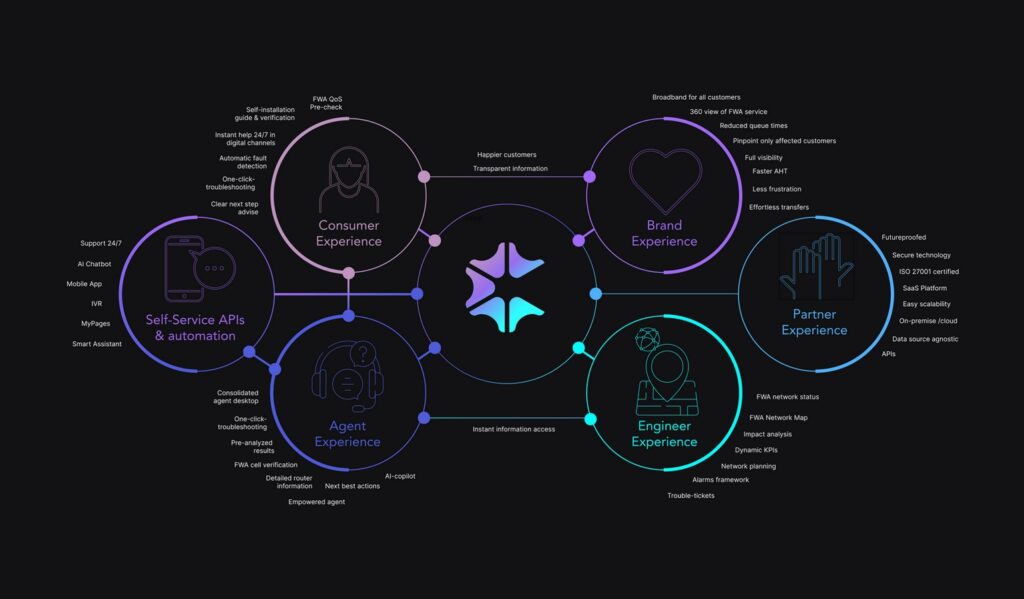
By: Subtonomy
The real story behind AI-led cost reduction in telecom customer support
In a recent edition of Euromedia magazine (May-June 2025), analyst Teresa Cottam discussed how the UK telecom operator Sky plans to cut its customer support expenses by terminating 2000 employees and substituting them with a mix of AI and outsourced personnel. Sky asserts that this decision is driven by customers’ preference to avoid calling customer service agents, opting instead to utilize their app and website.
What customers actually want
Cottom challenged this perspective – highlighting that Sky’s own customer survey presented a markedly different scenario. It was found that nine out of ten customers expressed a desire for channel options, not that they didn’t want to make calls when needed. As Cottam emphasized, what customers truly seek is convenience, choice, and less effort.
Rethinking the call center – transforming it from a crisis center to a relationship hub
Nevertheless, operators are certainly facing pressure to lower OPEX, and customer care represents a major expense.
The strength of proactive telecom support
Realizing this vision of customer service – one that prioritizes the customer, leverages advanced technology, and boosts satisfaction and loyalty – depends on a deep understanding of the customer and their experiences. Previously, operators only had limited views of actual experiences, pieced together from outdated data fragments, often triggered by customer-reported issues.
This reactive method and fragmented understanding of experiences have evolved due to the access to high-quality, real-time data and the capability of AI/ML to identify patterns and connect data. Consequently, we now have a much richer and more current understanding of experiences, paving the way for a proactive approach to customer care.
When human touch is crucial
Although Subtonomy clients can automate up to 75% of their customer inquiries, a certain percentage of incoming calls will always require human assistance, either due to the novelty or complexity of the issue, or because the customer seeks human reassurance.
These customer interactions become “moments that matter” – critical points in the customer relationship that can either strengthen loyalty or undermine it. Effectively managing these moments depends on agents having not only the appropriate data and tools to swiftly understand and resolve the customer’s issue on the first attempt, but also the opportunity to express empathy and ensure the customer feels appreciated.
To maximize the return on call center investments, it is essential to concentrate not only on speed and volume, but also on the quality and effectiveness of the interaction. A quick interaction may reduce call costs, but it is a false economy if it fails to completely resolve the issue. If the customer is required to call back, costs increase and frustration escalates, which can negatively affect CSAT/NPS scores and potentially lead to higher churn rates.
Transforming Customer Care into a Relationship Hub
- Evolving call centers from reactive “crisis centers” to proactive “relationship centers.”
- Leveraging real-time data and advanced AI/ML analytics for effective customer care.
- Using proactive insights to boost efficiency, satisfaction, and loyalty.
- Automating up to 75% of customer inquiries while preserving essential human interaction for complex or sensitive cases.
- Recognizing human interactions as “moments that matter,” critical to loyalty and customer experience.
- Equipping agents with comprehensive data insights, empathy, and reassurance to resolve issues effectively.

Subtonomy’s data-driven advantage
This is where Subtonomy steps in. They specialize in providing high-quality, real-time technical data to enhance the omnichannel support process. Whether it’s a call center agent, a chatbot, or self-service through an app, everyone gains from the insights this data offers to resolve issues and comprehend the customer’s overall experience.
Data not only enhances experiences but also unifies the organization – boosting business and operational performance while placing customer insight at the core of business operations. Engineering teams can leverage it to prioritize their workloads and adopt a customer-focused approach to network development and maintenance. Additionally, product managers and marketing teams can utilize it to create new products that align with customer needs and effectively market these to the customers most likely to purchase them, at the optimal time for buying.
